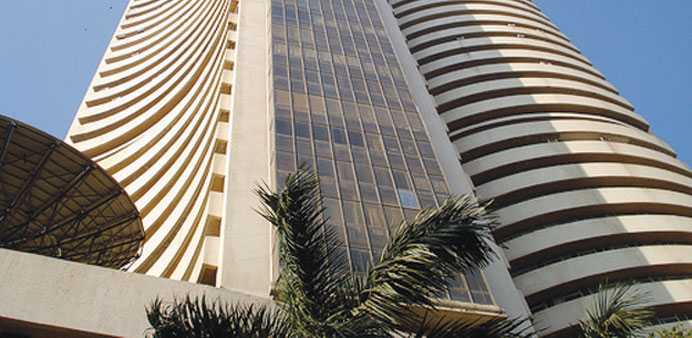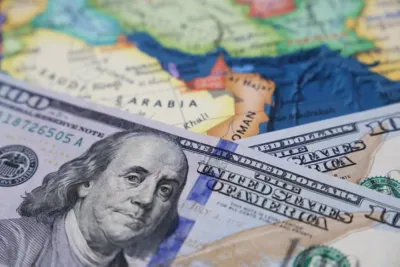Bloomberg/Mumbai
India’s rupee, stocks and bonds slumped, paring weekly gains, as the central bank unexpectedly raised its benchmark rate to damp inflation while scaling back earlier measures meant to support the currency.
Reserve Bank of India Governor Raghuram Rajan boosted the repurchase rate to 7.5% from 7.25%, the first increase since 2011. All 36 analysts in a Bloomberg News survey predicted no change. Rajan cut the marginal standing facility rate to 9.5% from 10.25% and relaxed some curbs on cash supply placed by his predecessor Duvvuri Subbarao.
“The RBI’s stance clearly shows that monetary easing can happen only after inflation drops and the rupee stabilises,” said Debasish Mallick, chief executive officer at Mumbai-based IDBI Asset Management. “The repo-rate increase shows that inflation continues to be a challenge.”
The Indian currency slid 0.8% to 62.2775 per dollar in Mumbai, paring the week’s advance to 2%, prices from local banks compiled by Bloomberg show. The currency, which fell as low as 62.6025, has risen 5.5% in September after four months of losses.
The yield on the 7.16% government notes due May 2023 surged 39 basis points, or 0.39 percentage point, to 8.58%, according to the central bank’s trading system. Today’s gain was the biggest since August 27.
Equities declined from a three-year high, led by lenders and property developers. The 30-stock S&P BSE Sensex slid 1.9% to 20,263.71. Lenders led declines, with HDFC Bank losing 3.5% and State Bank of India dropping 3.3%.
India’s wholesale-price inflation unexpectedly rose to a six-month high of 6.1% in August, official data show.
The RBI raised its main rate even after the Fed said September 18 it wants to see more proof of a recovery in the US economy before tapering monthly bond purchases of $85bn. Economists surveyed by Bloomberg had forecast a cut of $5bn. The rupee touched a one-month high on Thursday after sinking to to a record 68.845 per dollar on August 28.
“Governor Rajan isn’t taking any chances with inflation,” said Shishir Bajpai, a senior vice president at IIFL Wealth Management, which has about $1.8bn of shares under management and advisory. “The RBI policy was unexpected, but not unjustified. The Fed’s decision has eased some of the short- term concerns on rupee and foreign outflows.”
Overseas funds bought a net $576.3mn of local shares on September 19, the most in seven months, data from the regulator show. That extended this year’s net inflow to $13.2bn, the second-highest among 10 Asian markets tracked by Bloomberg. Global funds pulled $3.7bn from local shares in the three months to August as capital fled emerging markets amid concerns the Fed would pare stimulus.
One-month implied volatility in the rupee, a measure of expected moves in the exchange rate used to price options, slid 26 basis points today to 17.47%, data compiled by Bloomberg show.
Three-month onshore rupee forwards slid 0.4% to 63.67 per dollar, data compiled by Bloomberg show. Offshore non-deliverable contracts fell 0.9% to 64.12.
Yes Bank plunged 7.9%. ICICI Bank, the second-biggest lender, tumbled 4.7%. The 13-member S&P BSE Bankex lost 4.2%, the biggest decline in two weeks. Real-estate developer DLF retreated the most in four years.
Yes Bank sank 7.9% to Rs356.05, taking this year’s loss to 23%. ICICI Bank retreated 4.7% to Rs987.25. State Bank of India, the biggest lender, fell 3.3% to Rs1,747.55. HDFC Bank, the largest lender by value, lost 3.5% to Rs659.05.
DLF tumbled 12% to Rs151.5, the most since February 2009. Unitech plunged 6% to Rs17.3. Indiabulls Real Estate retreated 7.2% to Rs59.65. The S&P BSE India Realty Index fell 6.5%, the most since February 2012.
International investors bought a net $576mn of local shares on Thursday, data released by the regulator showed yesterday. The biggest net inflow since February 7 came amid a rally in Asian stocks, currencies and bonds after the Fed held off from paring monetary stimulus. Foreigners have plowed a net $13.2bn in Indian equities in 2013, the second-highest among 10 Asian markets tracked by Bloomberg.
The Sensex has risen 4.3% this year in local rupee terms and trades for 14.1 times projected 12-month earnings, data compiled by Bloomberg show. The gauge has lost 8.7% this year in dollar terms. The MSCI Emerging Markets Index trades at 10.8 times, the most expensive since March.
The CNX Nifty on the National Stock Exchange decreased 1.7% to 6,012.10. India VIX, which measures the cost of protection against losses in the Nifty, rose 0.9%.



